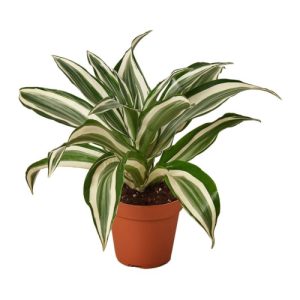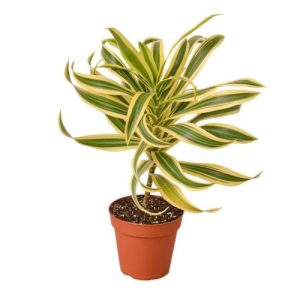- English
- Chinese
- French
- German
- Portuguese
- Spanish
- Russian
- Japanese
- Korean
- Arabic
- Irish
- Greek
- Turkish
- Italian
- Danish
- Romanian
- Indonesian
- Czech
- Afrikaans
- Swedish
- Polish
- Basque
- Catalan
- Esperanto
- Hindi
- Lao
- Albanian
- Amharic
- Armenian
- Azerbaijani
- Belarusian
- Bengali
- Bosnian
- Bulgarian
- Cebuano
- Corsican
- Croatian
- Dutch
- Estonian
- Filipino
- Finnish
- Frisian
- Galician
- Georgian
- Gujarati
- Haitian
- Hausa
- Hawaiian
- Hebrew
- Hmong
- Hungarian
- Icelandic
- Igbo
- Javanese
- Kannada
- Kazakh
- Khmer
- Kurdish
- Kyrgyz
- Latin
- Latvian
- Lithuanian
- Luxembou..
- Macedonian
- Malagasy
- Malay
- Malayalam
- Maltese
- Maori
- Marathi
- Mongolian
- Burmese
- Nepali
- Norwegian
- Pashto
- Persian
- Punjabi
- Serbian
- Sesotho
- Sinhala
- Slovak
- Slovenian
- Somali
- Samoan
- Scots Gaelic
- Shona
- Sindhi
- Sundanese
- Swahili
- Tajik
- Tamil
- Telugu
- Thai
- Ukrainian
- Urdu
- Uzbek
- Vietnamese
- Welsh
- Xhosa
- Yiddish
- Yoruba
- Zulu
- Kinyarwanda
- Tatar
- Oriya
- Turkmen
- Uyghur

Bzalani ngati tsamba lokongola la tsamba lachilendo lomwe limadziwika ngati Dracaeena chifukwa cha chikhalidwe chake. Mukakulira Manyara, kukonza ndi kusankha nthaka ndikofunikira kwambiri. Kupatula kuperekera zakudya zofunika, dothi lolondola limatsimikizira kupezeka koyenera ndi kulowetsa mpweya, chifukwa chake kulimbikitsa kukula kwa mbewu.

Manyara
Mtundu wa Dothi:
Growing in well-drained, well-aerated soil, dracaena thrives. Usually advice is to blend humus, garden soil, and sand. This blended soil helps avoid root damage by keeping normal moisture while not readily stagnant water. Should the soil be very thick or compacted, the roots run the risk of lacking oxygen, therefore compromising the plant’s condition.
Gwiritsani ntchito zowonjezera zina, kuphatikizapo Perlite kapena vermiculite, yomwe ingawonjezere mphamvu ya mpweya, motero zimathandizira Dracaee mosinthasintha m'mankhwala oyang'anira madzi. Kuphatikiza apo, onetsetsani kuti dothi losakanizika la malonda lili ndi michere yofunikira ndipo imapangidwa kuti ikhale yosangalatsa.
Potengera mawonekedwe a dothi
The development of Dracaena depends much on proper soil structure. The capacity to hold water and the air circulation depend on the size and distribution of soil particles. Generally speaking, the soil’s particles should be very homogeneous to guarantee seamless penetration of air and water. While too coarse particles might not be able to efficiently hold water, too fine soil particles would cause inadequate drainage.
Nthaka yangwiro ya mitengo yazipatso ya Magazi Ayenera kukhala ndi kusakaniza koyenera kwa zinthu zachilengedwe, mchenga, ndi dongo. Ngakhale kuti zinthu zachilengedwe zingakulitse chonde komanso mpweya wokhazikika m'nthaka, mchenga umapereka ngalande yokwanira; Clay amatha kugwira madzi. Kwa mbewu, makonzedwe awa akhoza kupereka malo abwino omwe akukulira.
Zosowa za PH
Kukula pamisisi ndi PH pakati pa zisanu ndi chimodzi ndi zisanu ndi ziwiri kumayenera kwa chinjoka mitengo yamagazi. M'malingaliro awa, dothi limatha kupereka michere yambiri komanso kukhala yabwino kwa kuyamwa kwa mbewu. Mphamvu kwambiri kapena dothi lamchere kwambiri limatha kulimbikitsa kukula kwa mbewu ndikukhala ndi vuto la zopatsa thanzi.
Wina ayenera kuyeza pH ya dothi lokhala ndi dothi loyesa lisanale. Mtengo wa pH uyenera kukhala kupitirira malo abwino, laimu (kuti akweze mtengo wa pH) kapena sulfur (kuti muchepetse mtengo wa pH) atha kuwonjezeredwa kuti musinthe. Kuwunika kwa dothi nthawi zonse kumathandizira kukhalabe malo okhala oyenera munthawi yeniyeni.
Zakudya Zakudya
The cornerstone for the good development of dragon blood trees is the appropriate nutritional value. Make sure the soil has sufficient basic minerals like nitrogen, phosphorous, and potassium for growing dragon blood trees. Plant development depends on nitrogen; it also influences leaf color and growth; phosphorous stimulates root system development and flower bud production; potassium increases the plant’s resistance and general condition.
Kugwiritsa ntchito feteleza woyenera kumatha kupereka michere yamagazi yamagazi mbewu zimafunika nyengo yonse ya kukula. Nthawi zambiri amalangizidwa kuti athire manyowa kamodzi pamwezi mu kasupe ndi chilimwe, feteleza ayenera kupewa nthawi yophukira ndi nthawi yozizira. Gwiritsani ntchito feteleza malinga ndi upangiri kuti mupewe kugwiritsa ntchito kwambiri ndi mizu.
kuwongolera kwamadzi
Dragon blood trees cannot withstand drought even if they favor well-drained soil. The soil has to be kept somewhat wet throughout the growth season. Water the dry soil right away, but try not to let water build at the pot’s bottom. Too much water may induce root hypoxia and even root rot.
Kulima m'nyumba kumathandizira kuti munthu asinthe pafupipafupi kuthirira molingana ndi chinyezi ndi kutentha kwa malo ozungulira. Mutha kukhala ndi madzi ambiri mu chilimwe pomwe matenthedwe ake ndi okwera; M'nyengo yozizira muyenera kudula kuthilira kuti muchepetse kutentha. Kuti muwonetsetse madzi panthawi yoyenera, mutha kuyang'ana kunyowa kwa nthaka ndi chala chanu.
Arodynamics ndi mpweya
Mpweya wabwino ndi mpweya wokhazikika umakhala kofunikira kwambiri kuti dothi lizikhala ngati mizu ya mtengo wamagazi wamaziwo. Onetsetsani kuti pansi pa chidebe chamaluwa chili ndi mabowo okwanira kukhazikika mpaka kulola madzi kuti akwereke mwachilengedwe. Nthaka ikhale yolimba kwambiri, mizu siyidzapeza mpweya wokwanira, potero amalimbikitsa chitukuko kapena kufa.
Zipangizo zamphamvu za mpweya wokwanira ngati dongo ngati dongo kapena centimic angathandize kulimbikitsa kufalikira kwa mpweya. Kuphatikiza apo, kumasulira kwa dothi mosayembekezera kumathandiza kuti pakhale mpweya wake wololera komanso kuteteza dothi.
Ulamuliro wa tizirombo ndi matenda
The resilience of the plant is very correlated with the condition of the soil. Choosing soil should be done with great care to avoid using soil that can contain pathogens or insect eggs as healthy soil can help to lower the prevalence of pests and illnesses. Regularly check the soil and the plant’s roots; handle issues in time.
Should pests arise, natural agents or biological control strategies may be used to treat them so as to prevent the harm caused by chemical pesticides to the soil ecology. Maintaining the soil’s reasonable moisture and good ventilation can help to greatly lower the insect and disease incidence in real management.

Dracaena White Jiw
A dragon blood tree’s Zosowa za dothi zimaphatikizapo zinthu zambiri, kuphatikiza mtundu, kapangidwe kake ka fungu, zokhala ndi michere, ndi zina mwa zina mwathunthu. Pogwiritsa ntchito njira yoyenera kusankha ndi kusamalira mosamala, anthu odzikongoletsa sangangolimbikitsa kukongola kwa chomera komanso kumvetsetsa kusangalala ndi kumverera kochita bwino pazachikhalidwe. Pamodzi, tiyeni tilandire mphotho ndi kuyamikila mphatso iyi kuchokera ku chilengedwe ndikukonda kusangalala ndi kusangalala ndi zomwe zimachitika chifukwa cha mitengo yamagazi.



